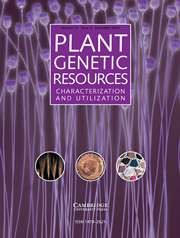No CrossRef data available.
Article contents
The variability of essential oil compositions in 10 populations of Phlomis olivieri Benth. using multivariate analyses
Published online by Cambridge University Press: 18 November 2025
Abstract
The medicinal significance of Phlomis olivieri Benth. and the unknown diversity among its distinct populations prompted the investigation. The primary objective of the study was to analyse the components of essential oils (EOs) derived from the above-ground parts of 10 wild populations of P. olivieri Benth. (Lamiaceae) originating from different regions of the Iranian plateau. The EOs were subjected to analysis using gas chromatography–mass spectrometry (GC-MS). In total, 20 compounds were identified in the oils, with a relatively high content variation. The major components of the EO were (E)-caryophyllene (2.51–54.48%), germacrene D (6.25–53.51%), spathulenol (4.38–23.41%), bicyclogermacrene (3.97–16.41%), α-pinene (0.07–11.32%), caryophyllene oxide (0.28–9.57%) and germacrene B (2.21–9.13%). To assess chemical variability, the EO components were categorized using hierarchical cluster analysis (HCA), which revealed two main clusters. HCA of the EO data revealed two main clusters, and principal component analysis corroborated this grouping. Identifying compounds such as isospathulenol, (2E)-2-dodecen-1-ol and undecanal in this species for the first time adds to its chemical profile. Furthermore, the discovery of a substantial presence of (E)-caryophyllene and germacrene D in select populations underscores the high chemical diversity among these populations.
Information
- Type
- Research Article
- Information
- Copyright
- © The Author(s), 2025. Published by Cambridge University Press on behalf of National Institute of Agricultural Botany.

